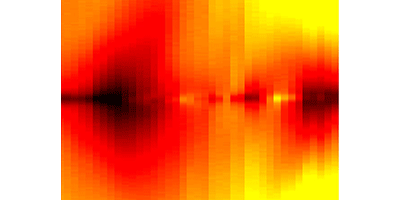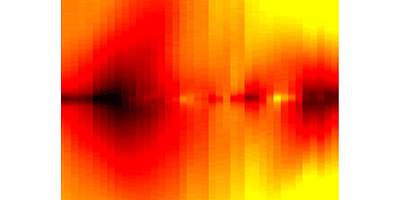Possible Sign of Annihilating Majorana Pairs
Particle physicists have been searching for over years for a hypothetical particle, called a Majorana fermion, that is its own antiparticle. Last year, condensed matter physicists reported a Majorana-like state in a superconducting device, but this interpretation is still under dispute. A new experiment with a similar device has obtained Majorana-like signatures. The results, described in Physical Review Letters, may provide the first evidence of “annihilations” between Majorana pairs.
Proposed in 1937, Majorana fermions are distinct from more familiar fermions like electrons and protons in that they annihilate with themselves. No proof of a fundamental Majorana particle has yet been found, but recent work detected hints of collective states that behave like Majorana fermions inside a hybrid semiconductor/superconductor device. Part of the interest in these quasiparticles is that they could serve as quantum bits that are less sensitive to bumps and wiggles from the environment.
To help confirm recent observations, Aaron Finck and his colleagues at the University of Illinois at Urbana-Champaign have created a new system that uses a semiconducting indium arsenide nanowire hooked up to two superconducting leads. Theoretical models predict that two Majorana quasiparticles will appear at the two ends of the nanowire when a strong magnetic field is turned on. The team observed the presumed signature—a conductance peak in the wire at zero voltage. They also witnessed the splitting and re-forming of this peak as they varied the magnetic field and electron chemical potential. Although these peak modulations could arise from electron scattering effects, the authors show that their data are consistent with the wave functions of the two Majorana quasiparticles extending towards each other inside the nanowire, which leads to their transformation (or annihilation) into a more mundane collective state. – Michael Schirber





